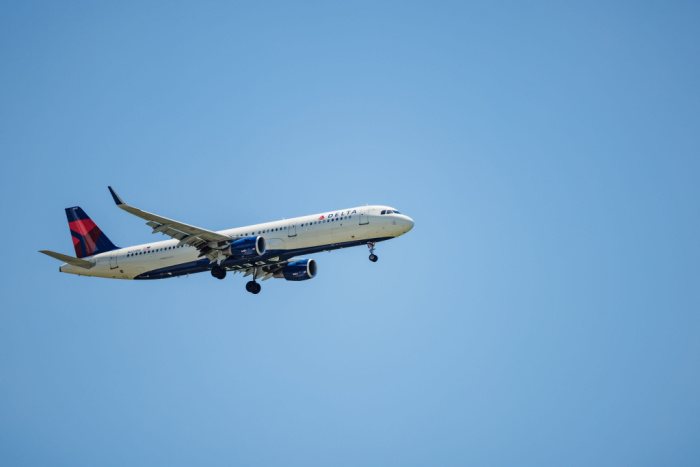When you’re on a plane, the world seems so small from high up in the air. Cars become specks, houses look almost like little doll houses, and you can’t even distinguish people or pets from that high up. It’s a surreal experience when you look at the world from that perspective, but you may be wondering exactly how high your plane is flying.
As a general rule, commercial planes fly about 36,000 feet above the ground, though the most common cruising altitude is between 33,000 and 42,000 feet or roughly six to eight miles above sea level. When you put it that way, it doesn’t seem all too high!
Let’s break down why planes fly at 36,000 feet and if they can safely fly at higher distances.
Key Takeaways
- Commercial planes typically fly at an altitude of 36,000 feet, which is more fuel-efficient and provides less turbulence, traffic, and weather.
- The highest altitude that commercial planes can fly is 42,000 feet, and each aircraft is rated to an altitude that will promote ideal operations.
- Flying too high can be unsafe and cause damage to the aircraft over time, so it’s essential to follow the recommended altitude for each aircraft.
- The altitude at which commercial planes fly is determined by factors such as aircraft size and model, weather conditions, and fuel efficiency.
- Ultimately, listening to the announcements from your pilot and checking the flight maps can give you an idea of how high your plane is flying and what to expect during your flight.
Why Is 36,000 Cruising Altitude?
Once your reach your planes cruising altitude, the in-flight service can start. You can resume using your favorite electronic devices or start to move around the cabin. But have you ever wondered why this is the magic altitude?
It has to do with the lower stratosphere, which can have many benefits. It’s more fuel efficient because there’s less drag. That simply means they can use less fuel to maintain their speed – they’re not flying against wind resistance, so it takes less effort to fly.
There’s less traffic, turbulence, and weather, too – all of which are huge wins when it comes to smooth flying. If, in the case of an emergency, flying at least 36,000 feet gives pilots more than enough space to maneuver a quick and safe landing. They have more time to land than if they were flying much lower.
What’s The Highest Commercial Planes Can Fly?
Typically, the highest altitude that commercial planes can fly is 42,000 feet above sea level. In 1987, a soaring aircraft reached 49,009 feet, which is the highest a commercial plane has ever flown on the record; however, this is not recommended.
The preferred altitude depends on a number of different factors, including the size and model of their aircraft. Many large, widebody aircraft can fly up to 43,000 feet, while more narrow-bodied aircraft can fly up to 41,000 feet.
Higher altitudes are typically reserved for military jets and private jets, though some commercial planes that are no longer in service were once rated to 60,000 feet. Ultimately, flying too high can be unsafe, and each aircraft is rated to an altitude that will promote ideal operations.
The Final Say On Altitudes

Check the flight maps to see just how high you’re flying, and listen to the announcements from your pilot. Flying between 33,000 and 42,000 feet is the ideal altitude for most commercial planes. You’ll get the ideal flight experience, working with the winds to get to your destination quickly and efficiently.
In rare cases, planes can exceed these limits, but it is not recommended. It will not be comfortable and may cause damage to the aircraft over time.
Frequently Asked Questions
-
Why do commercial planes fly at such high altitudes?
Commercial planes fly at high altitudes to take advantage of reduced drag and wind resistance, which makes flying more fuel-efficient and faster.
-
How high do commercial planes typically fly?
Commercial planes usually fly around 36,000 feet, but the most common cruising altitude is between 33,000 and 42,000 feet.
-
What is the highest altitude that commercial planes can fly?
The highest altitude that commercial planes can fly is around 42,000 feet, but this can vary depending on the size and model of the aircraft.
-
Can commercial planes fly higher than 42,000 feet?
While some commercial planes can fly higher than 42,000 feet, it’s not recommended due to safety concerns and potential damage to the aircraft.
-
What are the benefits of flying at a high altitude?
Flying at a high altitude provides benefits such as reduced drag, less turbulence, fewer weather and traffic issues, and a higher level of safety for emergency landings.
-
Why do some planes fly at lower altitudes?
Planes may fly at lower altitudes due to weather conditions, air traffic, and the need to avoid restricted airspace.
-
How can I find out how high my plane is flying during a flight?
You can find out how high your plane is flying by checking the flight maps or listening to announcements from the pilot during the flight.







